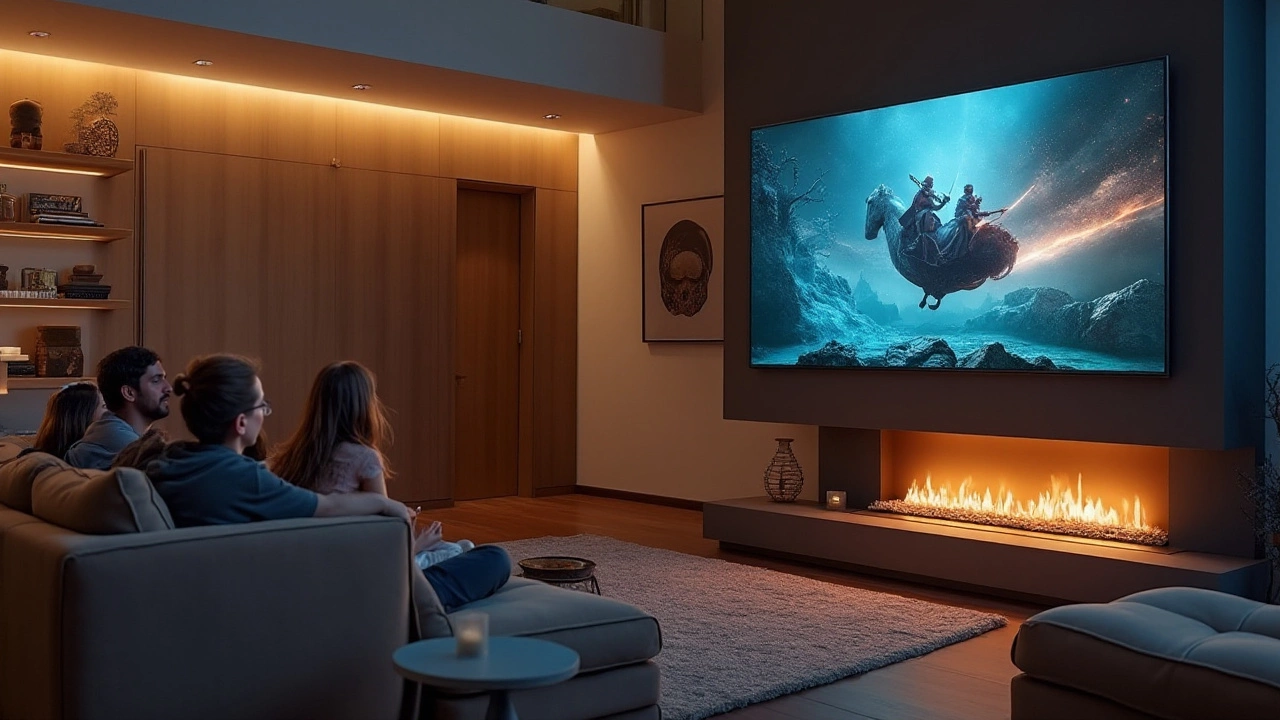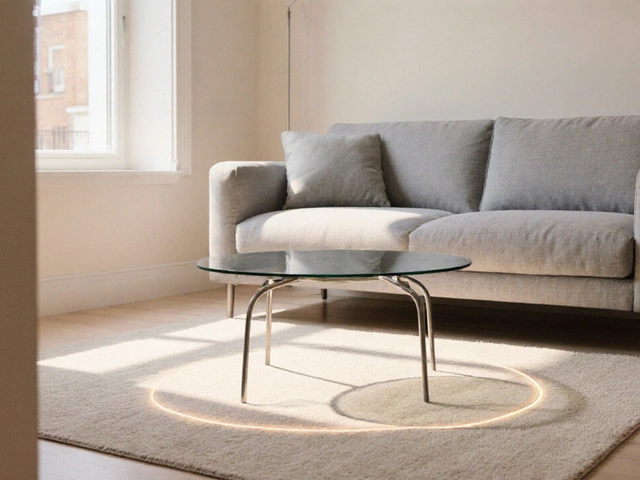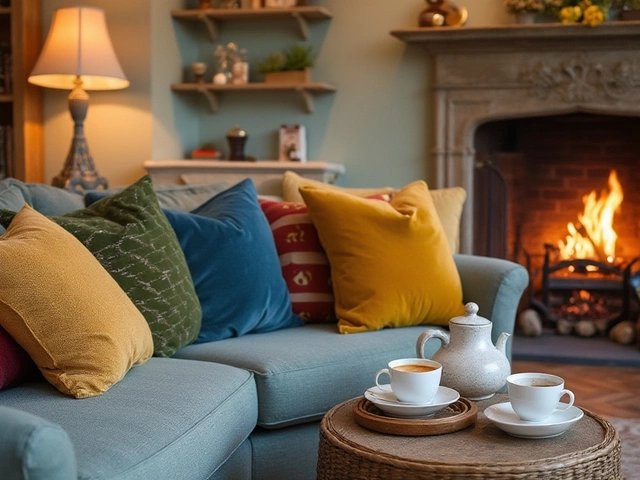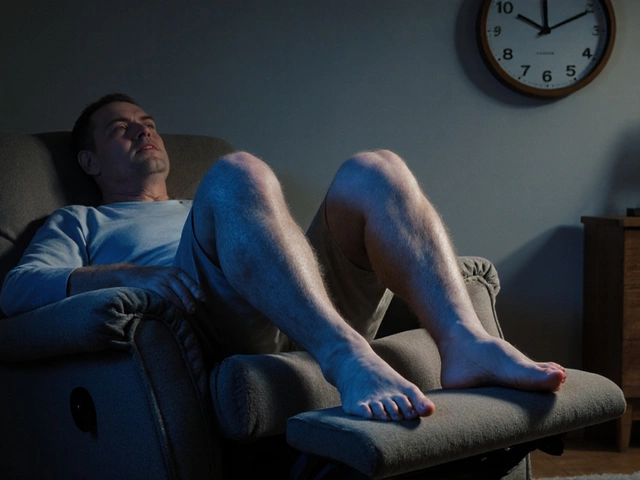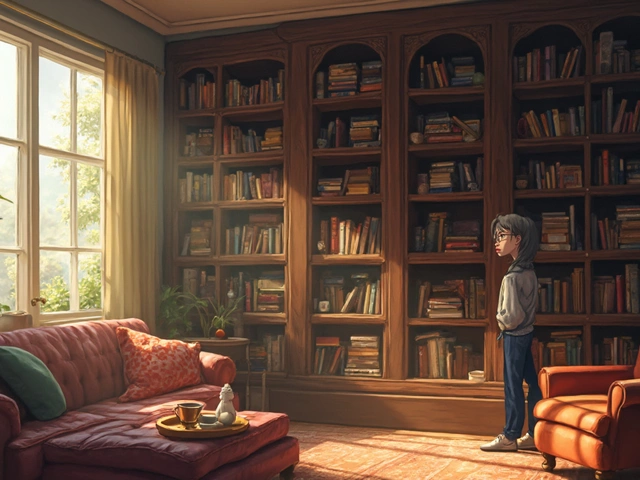When it comes to setting up your home either for movie nights or gaming marathons, the placement of your TV is more influential than you might imagine. Mounting a 70-inch TV at the right height can transform your living space into a personal theater, where every moment on screen is vivid and captivating.
Many people face the common dilemma of finding the right spot for their TV. Too high, and you might end up with a sore neck; too low, and the immersion diminishes. It's more than just drilling holes into a wall—it's about precision, comfort, and making the most of your entertainment system.
- The Importance of Proper TV Height
- Factors Influencing TV Height Placement
- Determining the Perfect Height for Your Space
- Common Mistakes and How to Avoid Them
- Enhancing Your Viewing Experience
The Importance of Proper TV Height
Placing your TV at the correct height isn't just about aesthetics; it plays a vital role in enhancing your viewing pleasure and protecting your well-being. The height of your 70-inch TV installation impacts not only the cinematic quality of the picture but also your physical health. When you sit down to enjoy a film or binge a series, the aim is to feel relaxed and engrossed, not to be distracted by discomfort in your neck or eyes. This concept is deeply rooted in ergonomic principles that recommend aligning screens with our natural line of sight to avoid unnecessary strain.
A study by the Cornell Human Factors and Ergonomics Laboratory found that prolonged viewing of screens placed at improper heights can lead to significant physical complaints over time. This fact emphasizes the importance of considering ergonomic guidelines during a TV wall placement. Typically, the TV's center should be positioned at eye level when you are seated, ensuring a natural and relaxed posture. This may seem trivial at first glance, but day-to-day comfort makes a substantial difference in the long haul.
Consider also the aesthetic value of a well-placed TV. Properly mounting a TV complements the room's design and flow, turning an entertainment setup into a stylish focal point. An inappropriately placed TV can disrupt the harmony of your living space, making the design feel lopsided or cluttered. As an entertainment focal point, it's essential that your television stands out for the right reasons.
Interestingly, data suggests that many individuals tend to mount their televisions too high, often to replicate the sports bar experience or due to the misjudgment of space requirements. Experts recommend that for a truly engaging experience, the center of the TV should align roughly with a seated person's eyes, typically around 42 inches from the floor. However, this can vary depending on personal preferences and the specific viewing environment.
As technology progresses, ultra-clear screens demand top-notch positioning to shine their best. Increased screen resolution, like those on modern 70-inch TVs, require calculated placement to be fully appreciated. Remember, comfort is key, and considering the TV mounting height can be the difference between staring up at the sky or gazing comfortably at the horizon. Now that you understand the significance of proper height, you can look forward to setting up your TV for the ideal viewing experience that truly elevates your home entertainment.
"Subtle adjustments in screen positioning can significantly improve your ergonomic comfort while watching," notes Dr. Patti Brennan, a notable ergonomics researcher.
Factors Influencing TV Height Placement
Mounting your 70-inch TV at the ideal height involves considering several crucial factors that ensure both comfort and aesthetics are maintained in harmony. One of the primary considerations is the average eye level of the viewers. Typically, when seated, the center of the screen should align with the viewer's eye line, which is generally around 42 inches off the floor for most individuals. This alignment makes viewing a natural and relaxed experience, minimizing neck strain and enhancing immersion in the visual content.
The layout and purpose of the room also play a significant role. In living rooms used for entertaining and general family viewing, you may accommodate a broader range of seating solutions. On the other hand, a dedicated media room, where ambiance and immersion take precedence, might allow for more specialized setups. The seating distance also impacts height placement extensively, as a bigger space and viewing distance may require slight adjustments to the mounting height to maintain an optimal viewing angle. Closer seating often allows for lower installation, enhancing the sense of immersion without sacrificing comfort.
Interior design and style preferences can not be ignored. In a modern setting where minimalistic and sleek designs are preferred, wall-mounted TVs hovering slightly above eye level create a floating effect, lending an air of sophistication to the space. Conversely, traditional settings might favor positioning the TV relative to other elements like fireplaces or cabinetry, integrating it smoothly into the room's existing aesthetic. Prioritizing a view that complements other furniture and décor ensures the TV becomes a part of the visual flow rather than a standalone distraction.
From a practical standpoint, ensuring proper cable management and accessibility to power outlets is essential. You should consider the input-output ports of the TV, which may dictate its height to prevent awkward stretches of cables or hindrance to signal accessibility. A well-organized cable system not only contributes to a neat appearance but also ensures the maintenance and troubleshooting of devices are hassle-free. Small considerations, such as whether you'll require access to HDMI ports for additional devices or sound systems, can significantly influence positioning.
The existing lighting in the room, both natural and artificial, is also essential as it can affect viewing comfort significantly. Optimally positioned TVs will avoid direct glare from windows or overhead lights, which can distort picture quality and cause eye strain. An often-overlooked aspect is the wall color and finish, which can affect perceived brightness and color accuracy of the television. Selecting the right positioning based on lighting can improve overall interaction with your multimedia setup.
According to a recent study by the Consumer Technology Association, „correct TV placement enhances both viewing comfort and the longevity of the TV itself by ensuring an optimal distance and angle view." This underscores the significance of putting thought into how and where you mount your device.
These factors collectively influence decision-making for positioning a 70-inch TV. Careful consideration of each can maximize the enjoyment and utility derived from the screen, making it a centerpiece for entertainment and relaxation in your home.
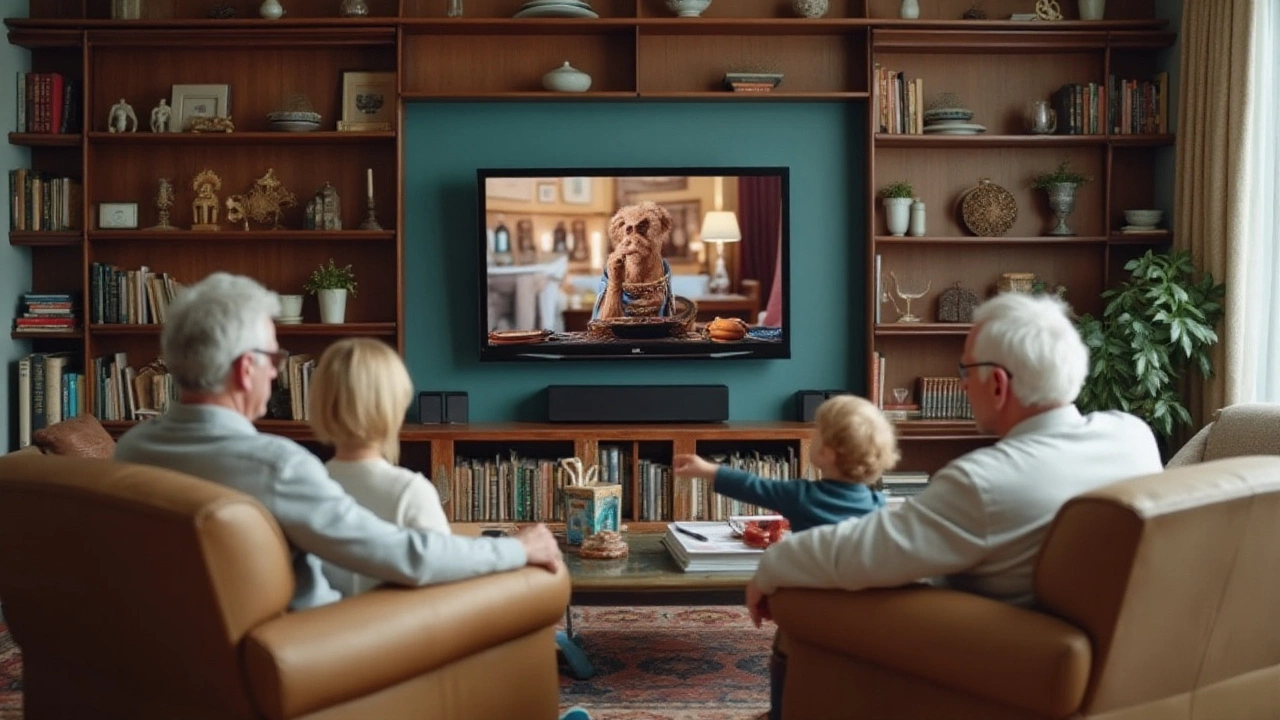
Determining the Perfect Height for Your Space
Finding the ideal height for your 70-inch TV might seem like a daunting task, but it’s simpler when you know what to consider. The perfect TV mounting height ensures that your eyes are level with the center of the screen when you’re in viewing position. For this, the experts often recommend placing the TV so that its center is about 42 inches from the floor, which is usually close to eye-level for someone seated. However, this might vary depending on your seating arrangement and the height of your furniture.
Considering viewer height, those in households with individuals of varying heights can find a middle ground. For spaces such as home theaters or living rooms where sofas and recliners might be lower, the TV should be adjusted to complement the usual seating height. A living room couch, for instance, might require a slightly lower placement compared to a seat at a bar-height counter. “You want the height of the TV to be comfortable for everyone who will be gathered, minimizing neck strain,” mentions Richard Mackenzie, a long-time interior design consultant.
Room arrangement plays a critical role too. A well-placed 70-inch TV should not only cater to seating height but also to the distance from the screen. Ideally, viewers should sit at a distance approximately 1.5 times the TV's diagonal size. So for a 70-inch TV, a distance of around 105 inches, or about 8.75 feet, is optimal. This setup provides a balance between immersion and comfort without overwhelming the eyes.
It is equally significant to consider the aesthetic aspects along with technical placements. The height should also allow the TV to blend harmoniously with the interior decor. Many opt to make their TV the centerpiece, mounted above fireplaces or flanked by bookshelves. But when aesthetics compete with comfort, it's typically advisable to prioritize viewer comfort since it directly impacts your viewing pleasure.
Some individuals favor using adjustable TV mounts or stands, particularly in multifunctional rooms where TVs might need to be swiveled or tilted. These allow you to tweak the height or angle as needed, especially useful during gathering events or quiet family movie nights.
Using an adjustable mount is a practical choice when facing odd room dimensions or unconventional angles. Besides providing flexibility, it ensures that whether you're binge-watching a series or hosting a large group, everyone gets a great view without any uncomfortable seating arrangements. It’s crucial that one invests time in determining this ideal setup to truly enjoy their entertainment systems to the fullest.
Common Mistakes and How to Avoid Them
Setting up a 70-inch TV isn't merely about size; it's also about ensuring the equipment functions harmoniously with your living space. A prevalent mistake homeowners make happens during the installation phase, where the TV is often mounted too high. Considering the importance of comfortable viewing, this can lead to neck strain and discomfort over prolonged periods. The ideal height typically aligns with the viewer's eye level when seated. This means centering the TV around 42 inches from the floor if your sofa seat is about 18 inches high. Contrary to this, many opt for a position that mimics art displays, resulting in awkward viewing angles.
Ignoring Room Conditions
It's crucial to factor in the conditions of the room where your TV will reside. High ambient light and glare often disrupt viewing quality, something overlooked at installation. Positioning windows or light sources relative to the screen is a common oversight. The TV should ideally face away from windows to prevent screen glare. Additionally, make sure the room's acoustics support satisfactory sound delivery; cushioned furniture and drapes can enhance this more than one would assume. These elements play a significant role in elevating or diminishing your overall viewing experience.
Following Misleading Advice
Another pitfall comes from blindly following what purported 'experts' suggest without considering individual room dynamics. Remember, construction materials— whether drywall or bricks— significantly affect mounting solutions. Ensure you've got the tools and the wall's capability to hold a large screen. Engaging professionals for installation can be advantageous, given the weight and value of such substantial devices. It's easy to miss critical stabilizing details, like ensuring mounts are drilled into studs for support. As the American Academy of Pediatrics cautions, 'A falling TV can cause life-threatening injuries.' Therefore, securing a sturdy mount foundation is key.
Overlooking Cables and Wiring
Cable management often flies under the radar amid the excitement of new tech installation. However, ignoring how cords are arranged can lead to frustration and even danger. Prioritize hiding cables to not only maintain the aesthetic quality of the room but also to avoid safety hazards. Utilizing concealed wall plates or investing in furniture that hides or organizes cables effectively can make a significant difference. Take proactive steps by planning your equipment layout, considering where peripherals will be housed, and ensuring you have adequate outlets and surge protectors to prevent any electrical mishaps.
By addressing these common pitfalls and adopting a methodical installation strategy, you can truly enhance your TV viewing experience, blending quality with aesthetic satisfaction to enjoy your favorite shows and games without a hitch. Employ the golden rule: thoughtful and informed planning prevents the snafus that often dog hurried setups.
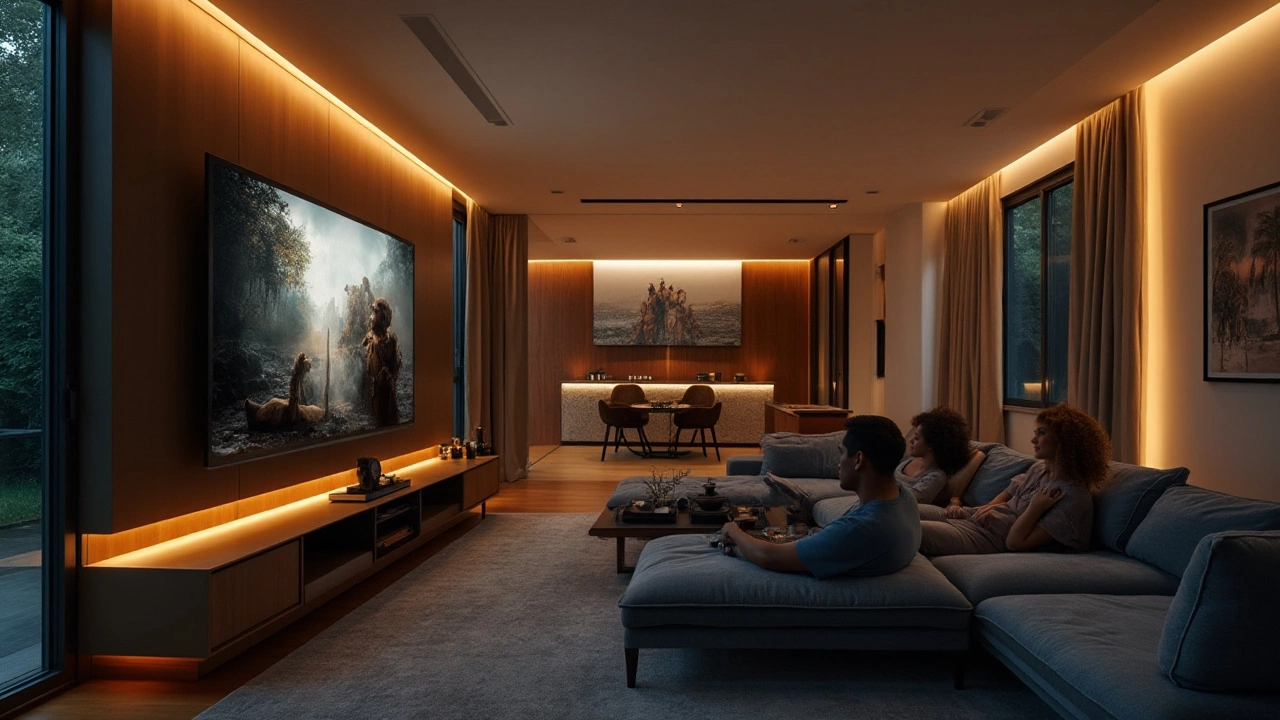
Enhancing Your Viewing Experience
Once you've nailed down the perfect height for your TV, it's time to focus on ways to truly enhance your viewing experience. The magic of a great home setup goes beyond just avoiding a crick in the neck. It’s about creating an immersive environment where the technology fades and your content shines. To start, consider the seating arrangement in your room. The distance from the TV should be proportional to its size; for a 70-inch model, experts often suggest approximately 8 to 12 feet for optimal clarity and detail without straining your eyes. Arranging seating at this sweet spot ensures everyone has a prime view, which can lead to better engagement with whatever's on screen.
Lighting plays a surprisingly huge role too. Glare from lighting can wash out colors and make it hard to see darker scenes, which is why controlling ambient light is essential. Using adjustable or smart lighting systems can help set the mood while minimizing reflections on the screen. Some movie enthusiasts turn to blackout curtains for daytime viewing, creating a cinema-like ambiance that's hard to resist. Consider an LED bias light strip behind your TV; it can reduce eye strain and enhance perceived contrast, making for richer colors.
Audio is half of the experience, yet it often receives less attention than visuals. A soundbar or home theater system can simulate a surround sound experience, making everything from dialogue to explosions more engaging. Don't underestimate the impact of high-quality sound; it can make every scene more compelling. As Ben Bowers from What Hi-Fi puts it,
"A TV's built-in speakers rarely do your movies justice. Investing in a good sound system can elevate the whole experience."Soundproofing the room, or even just using thick rugs and curtains, can help manage acoustics, minimizing distractions from outside noise.
Another overlooked aspect is cable management. Clean lines and a clutter-free area contribute to a relaxing atmosphere. Using cable sleeves or raceways can hide wires efficiently for a sleek, professional look. There's an old saying in design: "Less clutter equals more focus." This proves especially true in a media room, where the less visible chaos, the more you can immerse yourself in the content on screen.
Last but not least, keep your technology updated. Regularly update your TV's firmware to boost performance and ensure compatibility with the latest streaming services. If your TV supports HDR or 4K content, capitalize on this by subscribing to streaming services that provide such high-definition options. With new advancements always on the horizon, staying up-to-date will ensure that you get the best out of your TV wall placement and viewing experience. A carefully curated setup, one that considers every sensory element, is what transforms a simple TV night into something worth gathering around for.
